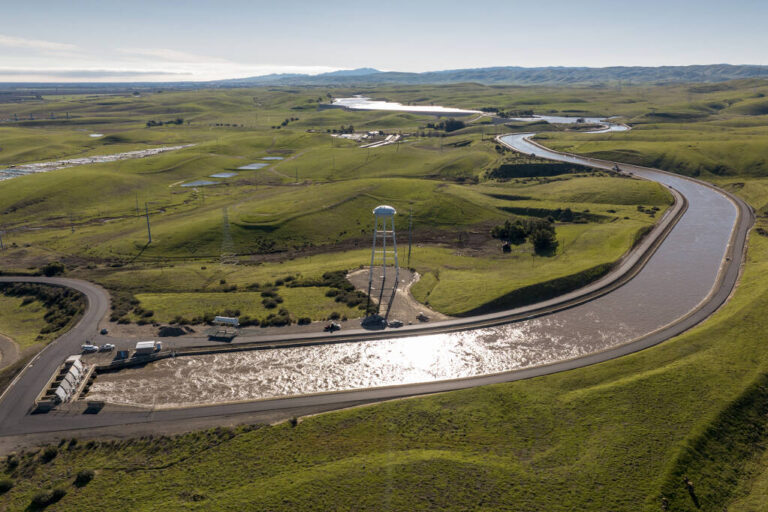Photo: A drone provides a view of water pumped into the California Aqueduct. (KEN JAMES / California Department of Water Resources)
Looking around the West, it’s impossible to ignore the signs of water scarcity. Our changing climate, growing population and massive demands from irrigated agriculture are colliding with critically dewatered streams and estuaries and the collapse of iconic salmon fisheries. California is wringing dry our diminishing water resources.
On the Colorado River, plunging reservoir levels have forced water supply cuts once unthinkable. In the Bay-Delta, which sustains California’s billion-dollar salmon fishery, drought and mismanagement have forced a statewide closure of all salmon fishing. Land in the Central Valley is sinking, undermining critical infrastructure like the California Aqueduct, because of unsustainable groundwater pumping.
One thing is certain: overdrawing finite water resources has a limit, and we are hurtling toward it. For generations we’ve argued about how to avoid a water crisis, but the debate often devolves to false choices — fish versus people, cities versus farms, north versus south — and re-fighting the same old water wars.
For those who would prefer to see solutions to our water challenges, there is finally good news. Last year, congressional Democrats worked with the Biden administration and a few of our GOP colleagues to enact the most sweeping water infrastructure package in decades. It’s already making a big difference.
We now have a unique opportunity to invest tens of billions of dollars in a sustainable water future, without pitting one group against another and without sacrificing ecosystems, human health, or underserved communities.
These historic investments from the Infrastructure Investment and Jobs Act and the Inflation Reduction Act include $1 billion to expand water recycling, a great way to make water supplies drought-proof and climate resilient; $3 billion to bring more certainty and equity to water management through tribal water rights settlements; $1 billion for water use efficiency and ecosystem health; and billions more for maintaining and repairing old, crumbling water infrastructure.
Funding from these laws, coupled with policy reforms in the 2022 Water Resources Development Act, represents the greatest progress in decades on improving water supply, water quality and ecosystems. With these legislative breakthroughs, we can move forward with a three-pronged approach: building out new, 21st century water infrastructure; using cutting-edge technology to get more out of existing water systems; and restoring natural systems to reduce conflicts and achieve long-term sustainability.
All of this and more are necessary to confront the all-encompassing threat of climate change. After years of talking and fighting, we are finally taking bold action.
These federal water infrastructure investments are a once-in-a-generation opportunity, and when combined with state and local efforts, can be transformative. We have a responsibility to ensure these funds are used smartly and equitably. It has taken half a century to enact a federal water package of this magnitude, so it’s critical that we not squander this progress.
Yet some in Congress seem intent on doing just that by dragging […]
Full article: www.pressdemocrat.com

